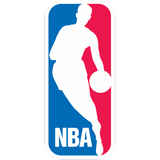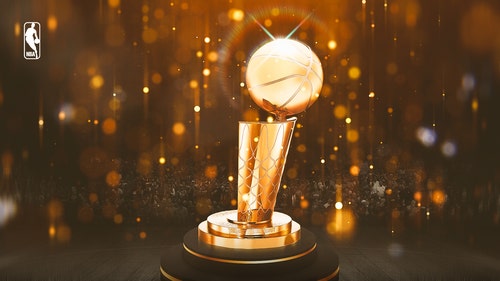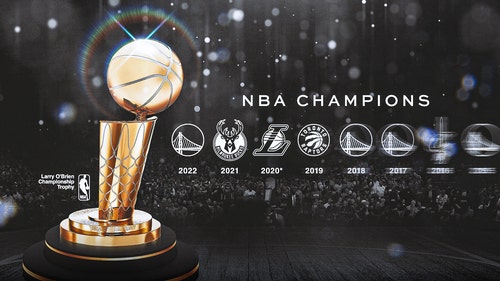
Los Angeles Clippers: Top 5 centers of all-time

The Los Angeles Clippers have had a few incredibly talented centers through the history of their franchise, but who makes the cut in the top five and as the best of all-time?
Apr 3, 2016; Los Angeles, CA, USA; Los Angeles Clippers center DeAndre Jordan (6) hangs on the net as he waits to be introduced for the game against the Washington Wizards at Staples Center. Mandatory Credit: Jayne Kamin-Oncea-USA TODAY Sports
The Los Angeles Clippers have always been recognized as one of the most unfortunate franchises in NBA history. Before Chris Paul‘s and Blake Griffin‘s Lob City era began, accompanied by DeAndre Jordan, the Clippers’ fortunes were far worse. Making the playoffs was a long shot. Winning 40 games was an immense struggle. Contending for anything was out of the question until recently. But that doesn’t mean the team has been without talent over the years.
In fact, along with the likes of Griffin and Jordan, there have been several excellent big men in the Clippers’ history. So, to pay tribute to such players and dive into some historical discussion as we not-so-patiently wait for the 2016-17 NBA season, let’s dive into their five best centers of all-time.
For this piece, I’ll won’t be exclusive to the Los Angeles Clippers, and will date back to their time as the Buffalo Braves and San Diego Clippers to include every team legend to have represented the franchise though its geographical changes.
Several aspects will be taken into account to form these rankings. Along with the actual talent level of each center in question, their longevity with the Clippers, statistical standing in team history, personal accolades, and future trajectory (spoiler: DeAndre is obviously on the list) will all be considered.
Well, that’s that. Let’s get right to it and work our way up from number five.
First, a brief star of the franchise who will be included as an honorable mention.
Jan 4, 2015; Salt Lake City, UT, USA; Former UCLA and NBA player Bill Walton prior to the game between the Utah Utes and the UCLA Bruins at Jon M. Huntsman Center. Utah won 71-39. Mandatory Credit: Russ Isabella-USA TODAY Sports
Honorable mention – Bill Walton
Per game averages with Clippers: 27 minutes,11.9 points, 9 rebounds, 2.9 assists, 0.8 steals, 2.3 blocks.
Clippers totals: 4 seasons (1979-80 to 1984-85), 169 games, 2,003 points, 1,526 rebounds, 493 assists, 137 steals, 385 blocks, 53.2 field goal percentage.
Honors with Clippers: None.
If this was solely based on talent, there’s no doubt that Bill Walton would belong among the best players in any ranking of the Clippers’ stars. He’s one of the best big men the league has seen, possessing potent scoring, fierce defense and the 1977-78 MVP award to become a Hall of Fame player and one of the best centers to grace the court.
But, sadly, longevity is an issue when weighing up Walton’s place in both franchise and league history. He doesn’t have the kind of career numbers or tenure with the team to shift himself above others in terms of their impact with the Clippers.
Walton was rid of a better career due to injuries and injuries alone. He had countless issues and dealt with multiple foot surgeries, missing three complete seasons because of it. Due to such problems, Walton left Portland as an NBA champion and MVP, but struggled through his time in his hometown San Diego during the late ’70s.
Walton would have played six seasons in San Diego and one in L.A. after the move in 1984, but he missed two straight seasons with injury from 1980 to 1982 in San Diego. During his four total seasons with the Clippers across both cities, Walton finished with only 169 games played.
Finishing 7th in Clippers history in box plus-minus (2.6) and 10th in PER (18.2) is at least an indicator of his value in those injury-ridden years.
In fact, Walton still blames himself for not being able to stay healthy and be a more productive leader for the Clippers. To this day, he feels responsible for the team leaving San Diego, as he said to ESPN’s Arash Markazi:
“When you fail in your hometown, that’s as bad as it gets, and I love my hometown. I wish we had NBA basketball here, and we don’t because of me… It’s my greatest failure as a professional in my entire life. I could not get the job done in my hometown. It is a stain and stigma on my soul that is indelible. I’ll never be able to wash that off, and I carry it with me forever.”
Who knows what would have happened in San Diego. But sadly for both Walton and the Los Angeles Clippers, the former MVP was never able to live out to his full potential.
5th place – Swen Nater
Per game averages with Clippers: 31.8 minutes, 13.5 points, 12 rebounds, 2.4 assists, 0.5 steals, 0.5 blocks.
Clippers totals: 6 seasons (1977-78 to 1982-83), 348 games, 4,694 points, 4,168 rebounds, 819 assists, 179 steals, 168 blocks, 54.2 field goal percentage.
Honors with Clippers: 1x total rebounds per game leader (1979-80).
A dominant rebounder and sound scorer in the post, Swen Nater was a terrific contributor when he came to San Diego. After beginning his career as an immediate two-time All-Star in 1973-74 and 1974-75 with the San Antonio Spurs of the ABA, Nater quickly established himself as a force on the boards and an efficient player all around.
After leading the NBA with a career-high 16.4 rebounds per game in 1974-75, Nater continued that kind of impact after joining the Buffalo Braves via trade in 1977.
Nater spent more time with the Braves and soon-to-be San Diego Clippers than he did with any other franchise. He was with the team for six seasons, anchoring their effort on the boards, facilitating fairly well, and operating from the post whenever need be.
During the early ’80s with Bill Walton, the Clippers actually had quite the big man duo, even if they’re not as athletic as the Lob City pairing of Griffin and Jordan.
Nater’s best season with the Clippers came in 1979-80, when he once again led the league in rebounds per game (15) and averaged 13.4 points and 2.9 assists for good measure, too.
When it was all said and done for Nater in 1984 as he finished his career with the Lakers, he retired at 30th all-time among the NBA’s rebounds per game leaders (10.8) and 28th in field goal percentage (53.7). In Clippers history, he finished 2nd in total rebound percentage (20.7) and 10th in win shares (28.9).
4th place – Benoit Benjamin
Per game averages with Clippers: 31.3 minutes, 13.3 points, 8.7 rebounds, 1.9 assists, 0.8 steals, 2.8 blocks.
Clippers totals: 6 seasons (1985-86 to 1990-91), 406 games, 5,405 points, 3,538 rebounds, 776 assists, 316 steals, 1,114 blocks, 50.1 field goal percentage.
Honors with Clippers: None.
To follow on from Nater’s elite rebounding, Benoit Benjamin arrives on this list as one of the best shot blockers in Los Angeles Clippers history. At least, before being traded for Olden Polynice and two first round draft picks in 1991, that’s the reputation Benjamin built for himself in L.A.
Selected by the Clippers with the 3rd overall pick in 1985, Benjamin made an immediate difference as a rookie. He averaged 11.1 points, 7.6 rebounds and 2.6 blocks in his 26.4 nightly minutes, earning his role as the starting center as the season progressed.
While he wasn’t a star scorer and never led the team to a top-10 finish in the Western Conference (let alone make the playoffs), Benjamin has still made his mark among the Los Angeles Clippers’ top big men.
Thanks to his ability to protect the paint and stuff opponents at the basket with his length, highlighted with a career-high 3.4 blocks per game in 1987-88, Benjamin ranks 1st in team history in blocks per game (2.8) and 1st in total blocks (1,117). On top of that, he ranks 5th in defensive rebound percentage (23.8), 4th in block percentage (five) and 4th in defensive box plus-minus (2.7).
Next? A throwback to one of the Clippers’ few All-Star centers.
3rd place – Chris Kaman
Per game averages with Clippers: 29.7 minutes, 11.8 points, 8.3 rebounds, 1.3 assists, 0.5 steals, 1.4 blocks,
Clippers totals: 8 seasons (2003-04 to 2010-11), 493 games, 5,813 points, 4,109 rebounds, 635 assists, 238 steals, 707 blocks, 48.7 field goal percentage.
Honors with Clippers: 1x All-Star (2009-10).
(Excuse the highlights shown above with Chris Kaman in a Lakers jersey. It’s the best footage I could find to show his game, except for the beautifully retro (pixelated) video below).
Chris Kaman is the first Clipper to appear on this list who represented the team in an NBA All-Star game. Unlike Swen Nater and Bill Walton, Kaman’s best years came during his time with the Clips, allowing him to earn a place high among the best centers in team history and earn his one and only All-Star appearance in 2009-10.
Elite athleticism was never in Kaman’s game. Neither was consistent defense. But, nevertheless, before the days of Blake Griffin and DeAndre Jordan, Kaman made up an impressive frontcourt tandem alongside Elton Brand earlier in the 2000s.
Before the days of Griffin’s playmaking, occasional flare such as this exited Clippers fans.
Even in recent years as his thirties have gotten underway, Kaman has been a skilled center. Capable of using both hands in the post and burying 45.6 percent of his shots from between 16 feet and the arc over the course of his career, he’s accounted for 70.8 percent of his career points with the Clippers. As a talented option in the post, capable passer and reliable mid-range threat, he became one of the team’s best centers after being drafted into L.A. as the 6th overall pick in 2003.
With that skill set and some tough work on the boards, Kaman had the best output of his career in 2007-08, averaging 15.7 points, 1.9 assists, and career-highs in rebounds (12.7) and blocks (2.8) per game.
Two years later, he made the All-Star team with a career-high 18.5 points, 9.3 rebounds and 1.2 blocks a night.
Through the best play of his career for eight years in L.A., Kaman climbed pretty high in the Clippers record books. As he accompanied Al-Farouq Aminu and Eric Gordon to New Orleans in the Chris Paul trade, Kaman finished 6th in Clippers history in minutes played (14,661), 6th in total rebounds (4,109) and just outside of the top 10 in total points (5,813).
Aug 21, 2016; Rio de Janeiro, Brazil; USA center DeAndre Jordan (6) celebrates winning the gold medal in the men’s gold game during the during the Rio 2016 Summer Olympic Games at Carioca Arena 1. Mandatory Credit: RVR Photos-USA TODAY Sports
2nd place – DeAndre Jordan
Per game averages with Clippers: 27.1 minutes, 8.7 points, 9.6 rebounds, 0.6 assists, 0.6 steals,1.8 blocks.
Clippers totals: 8 seasons (2008-09 to now), 592 games, 5,122 points, 5,703, 344 assists, 358 steals, 1,072 blocks, 67 field goal percentage.
Honors with Clippers: 1x All-NBA 3rd team (2014-15), 1x All-NBA 1st team (2015-16), 2x All-Defensive (2014-15 and 2015-16), 4x field goal percentage leader 2012-13 to 2015-16), 2x total rebounds per game leader (2013-14 and 2014-15).
Sooner or later, DeAndre Jordan simply had to appear on this list. How could he not after ascending even higher in Los Angeles Clippers legend after his year from Dallas drama in 2015 to a stellar few months that finished in a gold medal at the Rio de Janeiro Olympics.
It’s been an incredible year for Jordan, and an even more incredible journey from the 35th overall pick in the 2008 draft. Once a project athlete, Jordan is now the most terrorizing pick-and-roll threat in the NBA, coming off his fourth straight year leading the league in field goal percentage and continually reinforcing his stature as one of the NBA’s top defenders.
With his tenacious rebounding, physical presence, rim protection and help defense, Jordan made the All-Defensive First Team for the second straight season this year. Behind Hassan Whiteside‘s mark of 3.7 blocks per game, Jordan ranked 2nd with 2.3, also ranking 2nd in rebounds with 13.8. He a career-high 12.7 points to that stat line, too.
Especially during a season in which Blake Griffin was sidelined for 47 games due to injury, Jordan was even more important with his pick-and-roll threat, floor running ability, and sheer dominance as the Clippers’ interior anchor on defense.
Along with others stepping up across the team, he was a leader in L.A. climbing from 15th in defensive efficiency in 2015 to 4th in 2016.
To accentuate his offensive value, the Clippers scored 12.1 more points per 100 possessions with Jordan on the floor.
Finally, to honor his efforts and overall impact, Jordan became the All-NBA First Team center. Not a bad precursor to a gold medal, right?
More from Clipperholics
Now, after such rapid ascension over the last few seasons, Jordan has boosted his numbers and established a firm standing among the best players to ever represent the Clippers.
Already, at only 28 years old and only reaching 30 minutes per game in the last three seasons, Jordan has soared up the franchise rankings. He’s 1st in defensive rebounds (1,808), 1st in offensive rebounds by a mile (3,895 to Loy Vaught’s 3,102), 2nd in blocks (1,072), 3rd in block percentage (5.3), and 3rd in win shares (55.1).
On top of that, he’s tied for 1st on this list for the most All-NBA honors (two).
What makes Jordan even more worthy of 2nd place on this last? At 28 and beginning his prime, he’s only just getting started.
1st place – Bob McAdoo
Per game averages with Braves: 40.2 minutes, 28.5 points, 12.6 rebounds, 2.6 assists, 1.2 steals, 2.5 blocks.
Braves totals: 4 full seasons (1972-73 to 1975-76 — also played 20 games in 1976-77), 334 games, 9,434 points, 4,229 rebounds, 868 assists, 289 steals, 614 blocks, 50 field goal percentage.
Honors with Braves: Rookie of the Year (1972-73), 1x NBA MVP (1974-75), 3x All-Star (1973-74 to 1975-76), 1x All-NBA 2nd team (1973-74), 1x All-NBA 1st team (1974-75), 3x scoring leader (1973-74 to 1975-76).
To finish, it’s a leap backwards 40 years from the current days of DeAndre to the Clippers’ lone MVP, a Hall of Famer, and the second leading scorer in franchise history. Of course, it’s none other than Bob McAdoo.
DeAndre Jordan has an edge in terms of longevity. He’s had two All-Defensive First Team years, two All-NBA years, and he’s played eight seasons as a developing, athletic force. His trajectory is high and his production and impact is questionable.
But McAdoo was so good during his four-year stint with the Buffalo Braves and asserted himself at the top of the league that there’s no way he can’t be at the top of this list.
From taking over in the post, working hard on the offensive glass to burning opposing defenses with his smooth turnaround jumpers and pull-ups, McAdoo scored his way to becoming one of the best players in Braves/Clippers history. As soon as he was drafted by Buffalo as the 2nd overall pick in the 1972 NBA Draft, he started leading the team to new heights.
McAdoo averaged 18 points and 9.1 rebounds per game to become the 1972-73 Rookie of the Year.
By his second season, the Braves’ record jumped from 21-61 the year before to 42-40, unfortunately ending in a 4-2 defeat in the first round of the playoffs against the Boston Celtics.
McAdoo’s scoring also reached a new level in his sophomore year. Hitting 30.6 points per game on a league-best 54.7 percent shooting to go along with 15.1 rebounds and 3.3 blocks, he began a run of three straight years as the NBA’s scoring leader.
More from Clipperholics
The following year, McAdoo posted up and shot his way to even greater success, averaging a career-high 34.5 points per game to establish himself as the 1974-75 NBA MVP. Despite playing a league-high 43.2 minutes a night, he was still able to produce all season and shoot 51.2 percent from the floor, showing just how high he reigned over helpless defenders.
With his MVP award and three straight All-Star appearances to end his time in Buffalo, McAdoo was leading the Clippers and setting himself up to be one of their very best players for decades to come.
So, where did such terrific play land McAdoo among in franchise history?
4th in total rebounds (4,229), 5th in total blocks (614), 3rd in PER (22.8), 5th in win shares (50.9) and 3rd in win shares per 48 minutes (0.182). And, you guessed it, he was pretty high in scoring, ranking 2nd in both total points (9,434) and points per game (28.5).
The Braves traded McAdoo in 1976 for center John Gianelli and cash. But there’s no doubt that “Big Mac” would have continued to be a scoring machine if he was able to continue his career with the San Diego Clippers and finally the Los Angeles Clippers before retiring.
This article originally appeared on










